Office Depot & Office Max has
APC Back-UPS 1000VA / 600 Watt 8-Outlet Uninterruptible Power Supply (BX1000M-LM60) on sale for $97.99 - $10 in-store pickup discount =
$87.99 (shown in cart). Availability for in-store pickup will vary by location.
Note, offer valid w/ in-store pickup only, otherwise is $97.99 shipped. Additionally there are a few items available for free w/ $75+ purchase located on
this page.
Thanks to community member
xlnc for finding this deal.
Product Features: - 4 outlets provide battery backup and surge protection, and 4 additional outlets provide surge protection only.
- Designed with an LCD and push-button circuit breaker.
- AVR (Automatic Voltage Regulation) corrects voltage fluctuations in real time.
- Runs up to an estimated 13.5 minutes at half load and up to 4.3 minutes at full load.
- Coaxial cable offers CATV/SATV/modem/audio-video protection.
- Stepped approximation to a sine-wave power output.
- Includes software and 1GB network nataline protection.
- Surge Energy Rating: 1103 Joules.
- Backed by the manufacturer's 3-year limited warranty and a $250,000 equipment protection policy.
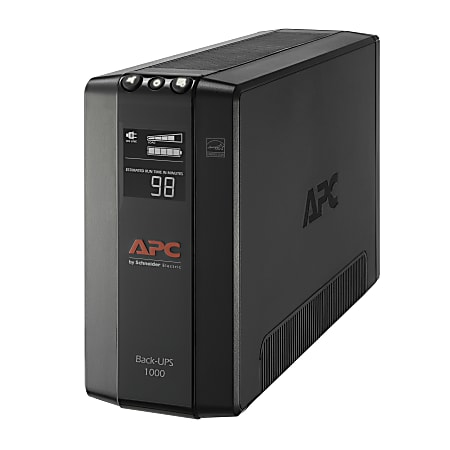
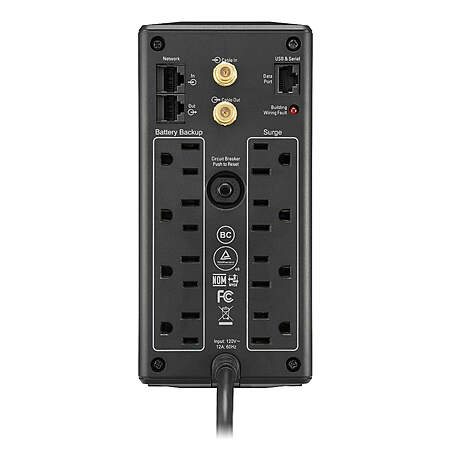
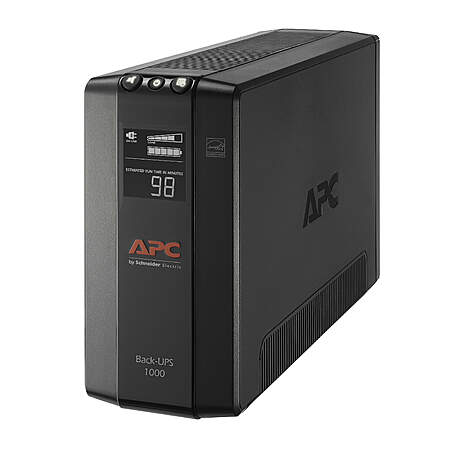
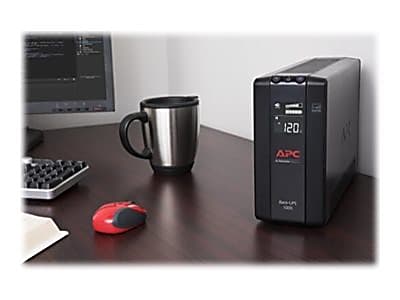
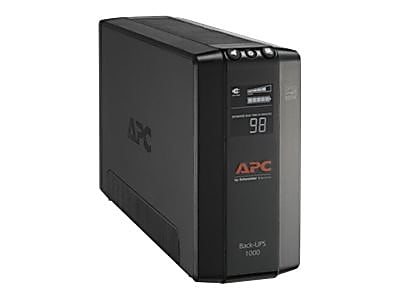
Leave a Comment
Top Comments
79 Comments
Sign up for a Slickdeals account to remove this ad.
/start
Plugging a surge protector into your UPS:
The noise filtration circuitry in a surge protector can effectively "mask" some of the load from the UPS, causing the UPS to report a lower percentage of attached load than there actually is. This can cause a user to inadvertently overload their UPS. When the UPS switches to battery, it may be unable to support the equipment attached, causing a dropped load.
Surge protectors utilize MOVs (Metal Oxide varistors) in their circuitry. Nonconforming MOVs in a surge protector connected to a UPS may cause the UPS to report an overload or a short circuit alarm.
/end
They also caution against strips, but for essentially the same reason)caution I gave earlier. Just be mindful of the currents being drawn.
/start
Plugging a surge protector into your UPS:
The noise filtration circuitry in a surge protector can effectively "mask" some of the load from the UPS, causing the UPS to report a lower percentage of attached load than there actually is. This can cause a user to inadvertently overload their UPS. When the UPS switches to battery, it may be unable to support the equipment attached, causing a dropped load.
Surge protectors utilize MOVs (Metal Oxide varistors) in their circuitry. Nonconforming MOVs in a surge protector connected to a UPS may cause the UPS to report an overload or a short circuit alarm.
/end
They also caution against strips, but for essentially the same reason)caution I gave earlier. Just be mindful of the currents being drawn.
Where did you find that, from an actual APC document or from some user in their forum? Theyre basically implying that you can save a bunch of money on electricity by putting everything on power strips to hide the load from your power company, lol. That's not how it works.
If the MOV has failed, obviously the stip is no good and has to be replaced, but if there is a surge big enough to fry the surge strip (partially or completely) it has fried the UPS too, since that comes before it in the path.
They just want you to buy a more expensive UPS with more outlets.
Where did you find that, from an actual APC document or from some user in their forum? Theyre basically implying that you can save a bunch of money on electricity by putting everything on power strips to hide the load from your power company, lol. That's not how it works.
If the MOV has failed, obviously the stip is no good and has to be replaced, but if there is a surge big enough to fry the surge strip (partially or completely) it has fried the UPS too, since that comes before it in the path.
They just want you to buy a more expensive UPS with more outlets.
Ask me if I use a surge-protected power strip on my personal/home Smart-UPS. Yes, but I also know enough care for the overall load on the power strip and estimate my own run-times anyways. I only have surge protectors in my house because I've eliminated all my older, basic power strips over time by replacing them with quality surge protectors when they've gone on sale.
In my professional life I've seen erroneous wiring fault issues with cheaper surge protectors and I've seen misreporting of calculated runtimes. YMMV, but I think that's the point. There is a potential for issue that you may or may not experience. I've personally seen issues akin to what they're stating, but not consistently so. One lesson there for anyone would be to pay for a quality surge protector and don't get tempted by low-cost, feature-rich off-brand Chinese products for your power needs. Wait for sales on known-reliable equipment, especially where power is concerned.
As for them wanting you to buy a more expensive UPS, that's not the case being made. They're making a case for a proper PDU. Which is even MORE expensive than a surge protector. :-) And note that they're not dissuading as much from a basic power-strip, more so just the loading issue that you can care for on your own with common sense.
In my professional life, I only ever use proper PDU's connected to UPS', for a number of reasons. You CAN get some outlet density on a Smart UPS 5000, for example, but if you're trying to power a fully loaded 4 post rack or cabinet, you're better served by extending the outlets vertically the rack using a vertical PDU, which would typically be a managed device so you can monitor status, get alerts, remotely power off/on individual outlets, etc. Purpose-built for the task.
I would think of this like the cautionary advice of not plugging a printer into a surge protector. It may be fine, no issues encountered. But, if could also trip it if it's not a higher quality device or, as is the case I've personally experienced with some HP laser jets, not even power up. Outlet is fine. Other devices are fine on that outlet. Printer doesn't like it. Doesn't even try to power up. Move the printer to the wall and it's fine. Impossible, right?
https://support.hp.com/us-en/document/c00597016
But it happens. Just like the APC + Surge issues. YMMV. Not everything is as cut and dry as we'd like to think.
Ask me if I use a surge-protected power strip on my personal/home Smart-UPS. Yes, but I also know enough care for the overall load on the power strip and estimate my own run-times anyways. I only have surge protectors in my house because I've eliminated all my older, basic power strips over time by replacing them with quality surge protectors when they've gone on sale.
In my professional life I've seen erroneous wiring fault issues with cheaper surge protectors and I've seen misreporting of calculated runtimes. YMMV, but I think that's the point. There is a potential for issue that you may or may not experience. I've personally seen issues akin to what they're stating, but not consistently so. One lesson there for anyone would be to pay for a quality surge protector and don't get tempted by low-cost, feature-rich off-brand Chinese products for your power needs. Wait for sales on known-reliable equipment, especially where power is concerned.
As for them wanting you to buy a more expensive UPS, that's not the case being made. They're making a case for a proper PDU. Which is even MORE expensive than a surge protector. :-) And note that they're not dissuading as much from a basic power-strip, more so just the loading issue that you can care for on your own with common sense.
In my professional life, I only ever use proper PDU's connected to UPS', for a number of reasons. You CAN get some outlet density on a Smart UPS 5000, for example, but if you're trying to power a fully loaded 4 post rack or cabinet, you're better served by extending the outlets vertically the rack using a vertical PDU, which would typically be a managed device so you can monitor status, get alerts, remotely power off/on individual outlets, etc. Purpose-built for the task.
I would think of this like the cautionary advice of not plugging a printer into a surge protector. It may be fine, no issues encountered. But, if could also trip it if it's not a higher quality device or, as is the case I've personally experienced with some HP laser jets, not even power up. Outlet is fine. Other devices are fine on that outlet. Printer doesn't like it. Doesn't even try to power up. Move the printer to the wall and it's fine. Impossible, right?
https://support.hp.com/us-en/document/c00597016
But it happens. Just like the APC + Surge issues. YMMV. Not everything is as cut and dry as we'd like to think.
It's funny your previous comment made me think exactly of that stupid HP thing where their first step was always to tell you to plug directly into the wall. Unless there is something broken or damaged in your power strip/surge protector, it is exactly the same as the wall outlet, a series of receptacles connected with wire. Your wall outlet may have 10 others in the path before it. Surge protectors just add a very high resistance shunt to ground that is only active during a surge, otherwise it isn't doing anything.
If you plugged a printer into a power strip and it would not work, the power strip was broken or severely overloaded (causing significant voltage drop). Sure there are very cheap crappy power strips out there, but that's a separate discussion/issue.
There is just as much potential for something to be wrong with the UPS itself, which is also just a series of outlets connected together with wire.
When it comes to basic electricity, it is pretty cut and dry, even if it doesn't seem like it. It can b calculated and explained every time using time tested formulas and measurements.
If a UPS has 6 outlets you can plug 6 surge protectors into it, and it will monitor the load passing through the UPS itself and warn you if overloaded, regardless of whether you have 1 thing directly connected or 100 via power strips.
No home user is going to use PDUs (or racks for that matter). That is definitely not the case they're making. And internally, besides the management functionality, a PDU is just a power strip. Granted with likely higher gauge wiring and has actually been tested to deliver the rated load, where cheap power strips may not be.
Leave a Comment